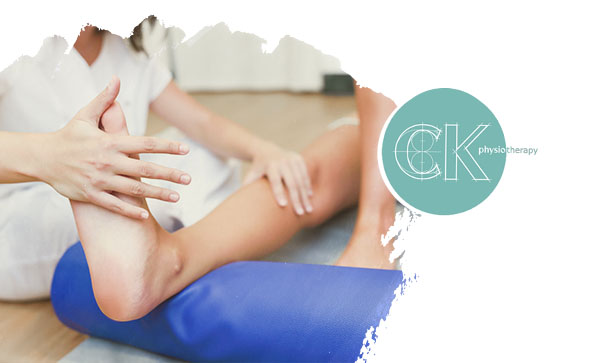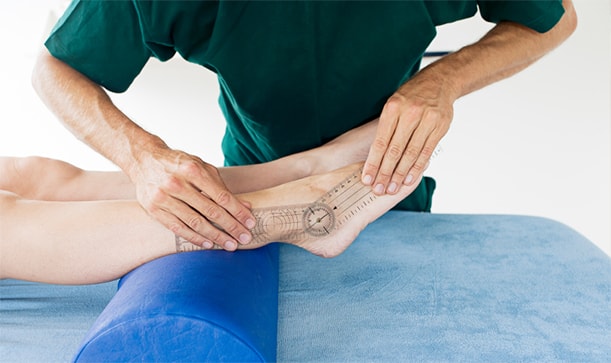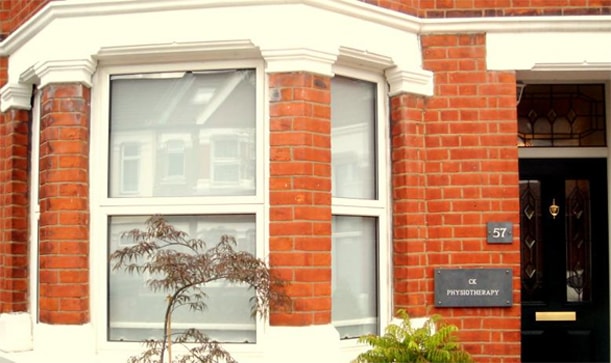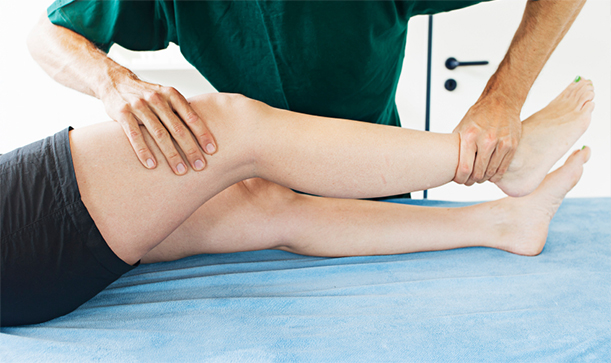CK Physiotherapy
AREAS COVERED
W7, W5, W13, Ealing, West London
57 Elthorne Avenue
Hanwell, W7 2JY
T: 020 8566 4113
M: 079 572 46185
E: info@ckphysio.co.uk
Location / Parking
We are situated in Hanwell, between Boston Manor Road and Northfields Avenue, south of the Uxbridge Road.57 Elthorne Avenue
Hanwell, W7 2JY
There are parking restrictions Mon - Fri 9-10am and 2-3pm. If you need a permit during this time please inform your therapist when you arrive. There are no parking restrictions at other times.
Opening Times
Please phone the number above during working hours to make an appointment. Our reception service will be happy to book your session.
London Underground / Bus Services
London Underground
10 min. walk from Boston Manor Tube Station.
15 min. walk from Northfields Tube Station.
Bus Service
E8, E3, E2, 207, 607, 83
Request Call Back
Our Blog
Physiotherapy Techniques and Approaches to Patient Treatment
By: BryanKelly (Psst, View author in Google Plus) Date: Apr 21st, 2021Physiotherapy was thought to have originated in the 19th century, first discovered and documented by Per Henrick Ling. The high focus was placed on massage, manual muscle manipulation and exercise.

Since this time, it has developed to embrace many physiotherapy treatments, techniques and approaches. All used in the prevention or recovery of patients affected by illness, injury or disability.
Three traditional techniques used by physiotherapists:
• Advice
• Exercise
• Manual therapy
• Electrotherapy
Depending on the specific problem or ailment you’re experiencing; these physiotherapy techniques and preventative approaches can help to:
• Manage pain
• Increase motion
• Aid recovery
• Prevent further damage or disease
As we begin to return to the outdoors, work environments and social or sporting activities. It’s helpful to know what physiotherapy treatments are available, the techniques used and how to gain access to physiotherapy.
The most common physiotherapy treatments
Above, we listed the three main physiotherapy techniques and treatments often used by physiotherapists. We will discuss this in more detail later.
Yet to restore movement, function and improved overall health, many other treatments and approaches are also available.
These additional treatments may be more appropriate than others when you’re accessing physiotherapy.
• Manual therapy - Physiotherapists use their hands to stretch, manipulate, and mobilise soft tissue.
• Range of Motion (ROM) exercises- Exercises to improve your mobility, circulation and function.
• Electrotherapy- Electrotherapy is a non-invasive treatment using electrical energy that is passed through the skin via electrodes.
• Ultrasound- Ultrasound uses a high-frequency soundwave, sending fine vibrations through the cells of the body.
• Ice and heat therapy- Heat or ice therapy is a treatment that can be applied to nearly anywhere on the body where muscle tightness and pain is experienced.
• Acupuncture- This treatment is used for pain relief, reducing inflammation and evoking the bodies natural healing process for swifter recovery and rehabilitation.
Which physiotherapy technique is best for me?
Physiotherapists are always looking for new and effective approaches and techniques that will improve patient outcomes.
Whether traditional methods or cutting edge technology. When it comes to physiotherapy, there’s no right or wrong technique. It’s simply a matter of what’s suited to you and provides the best overall results.
Traditional physiotherapy treatment is focused on providing advice, exercise and manual therapy for prevention or rehabilitation of your illness, injury or disability.
Treatment often follows a process such as this:
• Evaluation - whole-body health and history
• Activity - manipulation, exercises and stretches
• Education - instruction and advice
• Intervention - a variety of therapies
• Prevention - plans to improve overall health, reduce or prevent injury and disease.
We will detail how this process is incorporated under the three main techniques provided by physiotherapists. And discover how effective each approach can be.
Advice
Most injuries, illnesses or disabilities do not only present difficulties when receiving a few hours of therapy. Outside of physiotherapy, we have that thing called ‘everyday life’!
Unknowingly, our daily patterns can bring extra strain, stress and difficulties to our bodies. For long-term solutions, Physiotherapists must advise patients of underlying causes of their conditions or disorders.
By understanding the full impact of how their condition affects activities and tasks; this advice allows for patients to better see where changes in their day-to-day patterns will help for quicker recovery and better prevention.
By accessing physiotherapy advice and a dedicated physiotherapist, you’re able to have tailored guidance. You’re able to ask any questions (no matter how personal or embarrassing) and be safe in the knowledge that our physiotherapists are highly trained and providing a confidential service.
Advice will come in many forms and topics but may include:
• Postural correction
• Injury prevention
• Stretches/warmup activities
• Healthy diet
• Fall prevention
• Pain management
Exercise
Getting everything moving can be a struggle, but is highly recommended by physiotherapists.
When muscles, joints or connective tissues have endured too much. To help restore function and improve your mobility, exercise is key.
In these cases, nothing helps to heal faster than the range of motion (ROM) and strengthening exercises. These exercises are specifically tailored to each patient, taking into account their physicality level pre and post-injury or illness.
Your physiotherapist will ensure that these exercises are challenging to promote recovery but gentle enough so as not to harm or cause further injury or pain.
Exercises will be varied for the specified use of:
• Target areas
• Whole-body
• Pain management
• Strengthening
• Flexibility
• Balance
Used alongside other treatments, exercise restores independence and maintains overall health.
Manual therapy
Physiotherapists use manual therapy techniques to reduce pain, stiffness and swelling.
Using their hands to stretch, manipulate, massage and mobilise body tissue. Physiotherapists use this technique to help fluid drainage, increase movement and promote relaxation.
Teamed with advice and exercise approaches, manual therapy is an effective treatment for acute injuries and chronic pain.
This technique is valuable when preparing patients for exercise. Soft tissue mobilisation (STM) is also an effective manual therapy to reduce scar tissues and allow muscles and tendons to relax and recover.
Manual therapy techniques may include the following:
• Stretches
• Lymph drainage
• Soft tissue mobilisation
• Joint manipulation
• Joint mobilisation
Manual therapy can be used for conditions that don’t include joints, bones or muscle. Such as lung conditions or long-term conditions that cause a spike in sleep or anxiety-related problems.
Using physiotherapy that works
At CK Physio we value the point of getting things right and when you’re in pain, we respect that you want to find a suitable solution fast!
Ultimately the best technique will be the one that provides you with long-lasting results and the greatest satisfaction.
With many years of experience, our physiotherapists are there to direct you in a time of need so that you feel confident you’re receiving the best treatment possible.
Under the current circumstances of the pandemic, initially, we invite you to have a virtual assessment. This enables both you and our Physiotherapists to remain safe, whilst fully exploring the physiotherapy techniques and approaches best suited to you.
You can gain access to your virtual consultation via our online booking form.
Remember there’s no such thing as a silly question! So use this session to ask questions and talk through the various requirements you may have before visiting our clinic.





